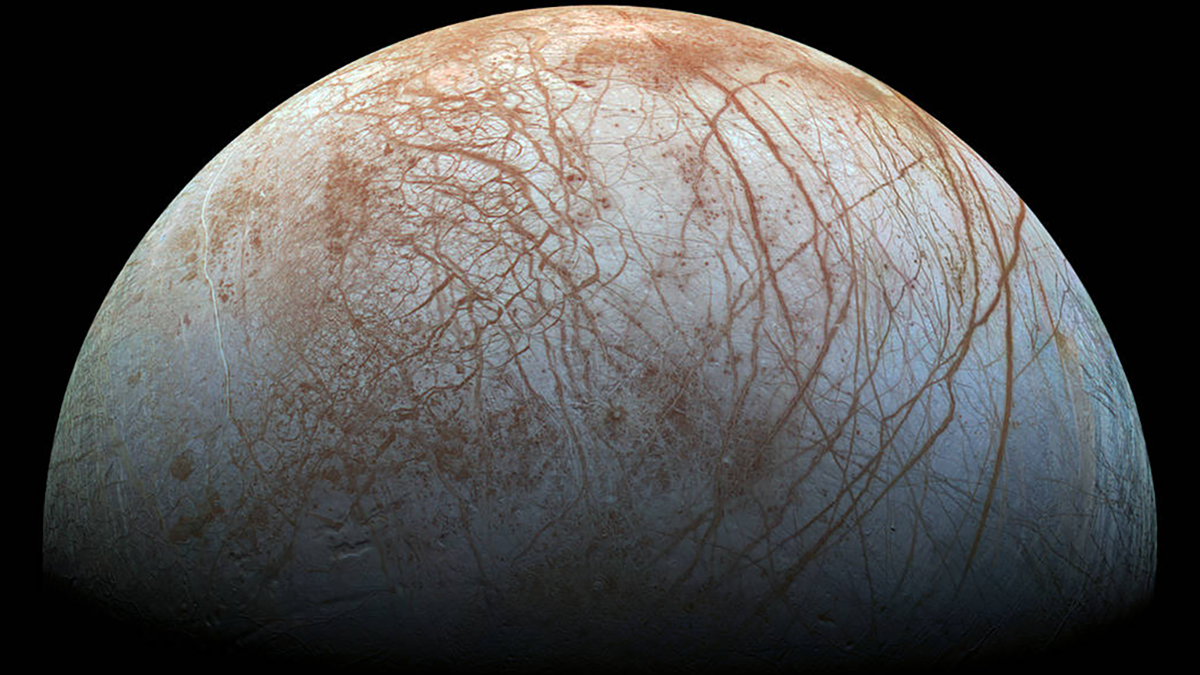Editors’ Highlights are summaries of recent papers by AGU’s journal editors.
Source: AGU Advances
The deep oceans of icy moons, like Europa, have been suggested as one place that could host extraterrestrial life. Currently, Europa always displays the same side towards Jupiter, just as we always see the same side of our moon. However, there are indications that Europa’s icy shell slowly drifts such that, over time, different parts face Jupiter.
Ashkenazy et al. [2023] propose that this effect could be driven by stresses from deep ocean currents acting on the ice shell. They developed a physical/mathematical model for linking ice shell movements to ocean currents, including deformation within the ice itself. The model predicts an ice shell that could be spinning slower than the synchronous angular rate that would keep the same point facing Jupiter. Forthcoming spacecraft missions will provide improved observations of Europa’s ice shell drift and can be used to constrain key parameters, such as the ice thickness and viscosity of Europa’s icy shell.
Citation: Ashkenazy, Y., Tziperman, E., & Nimmo, F. (2023). Non-synchronous rotation on Europa driven by ocean currents. AGU Advances, 4, e2022AV000849. https://doi.org/10.1029/2022AV000849
—Susan Trumbore, Editor in Chief, AGU Advances

